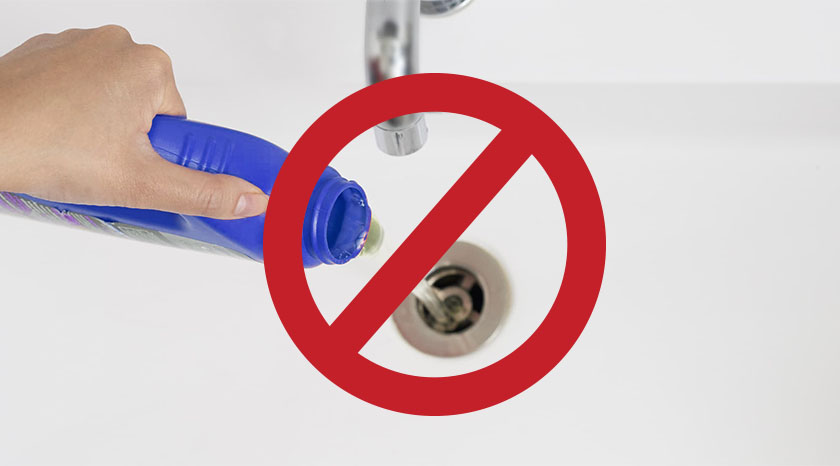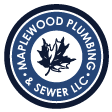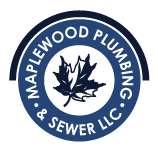
Just a few weeks ago, a plumber in Texas suffered severe burns to his eyes and arms (it ate right through his gloves) after a service call where the homeowner had used over the counter (OTC) drain cleaner prior to his arrival. Unfortunately, this isn’t the first time a plumber has been injured. We understand that it’s tempting to fix a drain problem on your own and potentially save some money, but there are better ways to DIY a plumbing issue.
Before we get into the nitty-gritty of unclogging drains, know that you can lower the odds of having to deal with a clogged drain by following some simple preventative maintenance procedures:
Once a day: Run very hot water down your kitchen and bathroom sinks.
Once a week: Pour a small amount of bleach into the sink and let sit for one hour before running water.
Once a month: Pour equal parts salt & vinegar down drains.
If despite these preventative measures, you end up with a clogged drain, don’t immediately reach for the OTC cleaner. Here are some safer alternatives that can work:
How to Avoid using OTC Drain Cleaner in a Clogged Floor Drain
Floor drains should be kept filled with water to prevent odors and sewer gas from escaping into your home. If you do notice an odor coming from a floor drain in your home, pour cool, clean water into the drain.
How to Avoid using OTC Drain Cleaner in a Clogged Bathroom Sink
Mix one tablespoon of salt into a ¼ cup of plain white vinegar and pour mix down drain. Wait an hour then, run hot water for 60 seconds to clear loosened dirt and debris. Wait an hour and repeat process. If your bathroom drain is still clogged after completing these steps, contact a licensed professional.
How to Avoid using OTC Drain Cleaner in a Clogged Bathroom Tub or Shower
Start by removing the strainer. Hair and soap often accumulate underneath. You’ll need a screwdriver to accomplish this step unless your tub has a drain stopper. If that’s the case, remove it by twisting and lifting it out of the drain.
Next, remove any hair or soap scum and scrub the parts to be sure they’re clear and clean.
If you have a drain stick, insert it into the drain, past the curved trap. The stick is equipped with small interlocking hooks that will grab and allow you to pull out hair and other debris. Be sure to clean the drain stick after use, you might need it in the future! Run water down the tub drain to be sure you’ve removed the clog. If it still won’t drain normally, call in a pro.
How to Avoid using OTC Drain Cleaner in a Clogged Kitchen Sink
There are several ways you can fix a clog in your kitchen sink.
Clean the P-trap. Place a bucket under the P-trap, then remove it with a pipe wrench. Clean the trap and the trap arm.
Use Homemade Cleaner. First, remove as much water from the clogged sink as possible. Then, pour a cup of baking soda into the drain, followed by a cup of vinegar. Close the stopper and wait five minutes, then pour boiling water down the drain.
Plunger it. If you have a dishwasher, clamp the drain hose. If you have a double-bowl sink, stuff a wet rag into the clear side before filling the clogged side halfway with water. Cover the drain hole with a plunger and vigorously pump up and down several times, ending by “popping” the plunger off the drain to help dislodge the clog. Repeat until the drain is clear.
Downspout clogged? Here’s how to fix it: https://maplewoodplumbing.com/residential-plumbing/drain-cleaning/downspout/
And here’s how to prevent clogs in your laundry drain: https://maplewoodplumbing.com/residential-plumbing/drain-cleaning/laundry-drain/
We’d much prefer you not use OTC drain cleaners, but if you do use these products, and end up calling a tech, please let them know what product you used and when. It could save someone from a serious injury.
St. Louis-area homeowners have trusted Maplewood Plumbing and Sewer with their preventive maintenance and emergency plumbing needs for more than 30 years. Give us a call at 314-645-6350 or fill out the contact form here for more information or to request a bid.
Comments are closed


